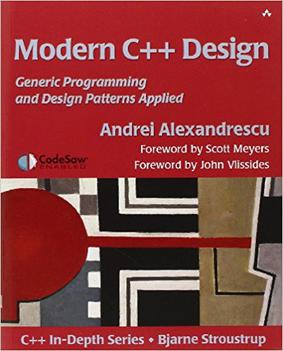The bridge pattern is a design pattern used in software engineering that is meant to "decouple an abstraction from its implementation so that the two can vary independently", introduced by the Gang of Four. The bridge uses encapsulation, aggregation, and can use inheritance to separate responsibilities into different classes.

In software engineering, the singleton pattern is a software design pattern that restricts the instantiation of a class to a singular instance. One of the well-known "Gang of Four" design patterns, which describe how to solve recurring problems in object-oriented software, the pattern is useful when exactly one object is needed to coordinate actions across a system.

In computer programming, the flyweight software design pattern refers to an object that minimizes memory usage by sharing some of its data with other similar objects. The flyweight pattern is one of twenty-three well-known GoF design patterns. These patterns promote flexible object-oriented software design, which is easier to implement, change, test, and reuse.
In class-based programming, the factory method pattern is a creational pattern that uses factory methods to deal with the problem of creating objects without having to specify the exact class of the object that will be created. This is done by creating objects by calling a factory method—either specified in an interface and implemented by child classes, or implemented in a base class and optionally overridden by derived classes—rather than by calling a constructor.
In object-oriented programming, the decorator pattern is a design pattern that allows behavior to be added to an individual object, dynamically, without affecting the behavior of other objects from the same class. The decorator pattern is often useful for adhering to the Single Responsibility Principle, as it allows functionality to be divided between classes with unique areas of concern as well as to the Open-Closed Principle, by allowing the functionality of a class to be extended without being modified. Decorator use can be more efficient than subclassing, because an object's behavior can be augmented without defining an entirely new object.
In computer programming, the proxy pattern is a software design pattern. A proxy, in its most general form, is a class functioning as an interface to something else. The proxy could interface to anything: a network connection, a large object in memory, a file, or some other resource that is expensive or impossible to duplicate. In short, a proxy is a wrapper or agent object that is being called by the client to access the real serving object behind the scenes. Use of the proxy can simply be forwarding to the real object, or can provide additional logic. In the proxy, extra functionality can be provided, for example caching when operations on the real object are resource intensive, or checking preconditions before operations on the real object are invoked. For the client, usage of a proxy object is similar to using the real object, because both implement the same interface.
In object-oriented programming, the command pattern is a behavioral design pattern in which an object is used to encapsulate all information needed to perform an action or trigger an event at a later time. This information includes the method name, the object that owns the method and values for the method parameters.
In object-oriented programming, the iterator pattern is a design pattern in which an iterator is used to traverse a container and access the container's elements. The iterator pattern decouples algorithms from containers; in some cases, algorithms are necessarily container-specific and thus cannot be decoupled.
In software design and engineering, the observer pattern is a software design pattern in which an object, named the subject, maintains a list of its dependents, called observers, and notifies them automatically of any state changes, usually by calling one of their methods.
In computer programming, the strategy pattern is a behavioral software design pattern that enables selecting an algorithm at runtime. Instead of implementing a single algorithm directly, code receives run-time instructions as to which in a family of algorithms to use.
Multiple dispatch or multimethods is a feature of some programming languages in which a function or method can be dynamically dispatched based on the run-time (dynamic) type or, in the more general case, some other attribute of more than one of its arguments. This is a generalization of single-dispatch polymorphism where a function or method call is dynamically dispatched based on the derived type of the object on which the method has been called. Multiple dispatch routes the dynamic dispatch to the implementing function or method using the combined characteristics of one or more arguments.
A method in object-oriented programming (OOP) is a procedure associated with a message and an object. An object consists of state data and behavior; these compose an interface, which specifies how the object may be utilized by any of its various consumers. A method is a behavior of an object parametrized by a consumer.
In object-oriented programming, in languages such as C++, and Object Pascal, a virtual function or virtual method is an inheritable and overridable function or method for which dynamic dispatch is facilitated. This concept is an important part of the (runtime) polymorphism portion of object-oriented programming (OOP). In short, a virtual function defines a target function to be executed, but the target might not be known at compile time.
In computer science, object composition and object aggregation are closely related ways to combine objects or data types into more complex ones. In conversation the distinction between composition and aggregation is often ignored. Common kinds of compositions are objects used in object-oriented programming, tagged unions, sets, sequences, and various graph structures. Object compositions relate to, but are not the same as, data structures.

Modern C++ Design: Generic Programming and Design Patterns Applied is a book written by Andrei Alexandrescu, published in 2001 by Addison-Wesley. It has been regarded as "one of the most important C++ books" by Scott Meyers.
In computer programming, an opaque pointer is a special case of an opaque data type, a data type declared to be a pointer to a record or data structure of some unspecified type.
The curiously recurring template pattern (CRTP) is an idiom, originally in C++, in which a class X derives from a class template instantiation using X itself as a template argument. More generally it is known as F-bound polymorphism, and it is a form of F-bounded quantification.
In object-oriented computer programming, a null object is an object with no referenced value or with defined neutral (null) behavior. The null object design pattern, which describes the uses of such objects and their behavior, was first published as "Void Value" and later in the Pattern Languages of Program Design book series as "Null Object".

In computer programming, the specification pattern is a particular software design pattern, whereby business rules can be recombined by chaining the business rules together using boolean logic. The pattern is frequently used in the context of domain-driven design.
Wt is an open-source widget-centric web framework for the C++ programming language. It has an API resembling that of Qt framework, also using a widget-tree and an event-driven signal/slot system.







